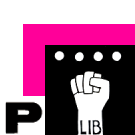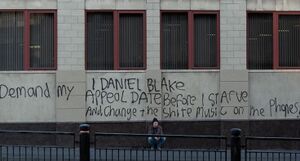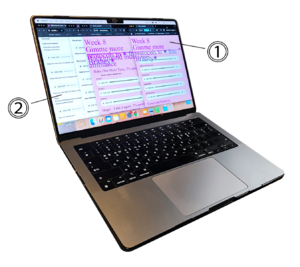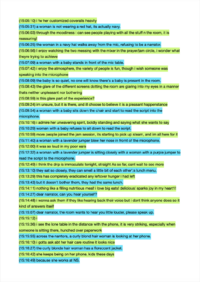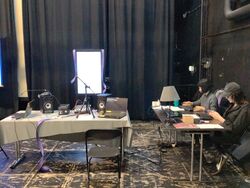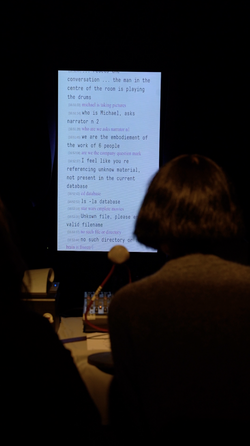User:Zuhui//T2 Assessment
From XPUB & Lens-Based wiki
SI25
Radio Shows
Roles: Claudio(producer) / Charlie(interface) / Wyn, Fred + Zuhui & Eleni(host)
Hold Music
Elevator music, also known as on hold music or background music, was originally created with the specific purpose of being played in elevators, lobbies, and other public spaces. Companies like Muzak Holdings (founded in the early 20th century) were pioneers in producing music tailored for these environments. The goal was to create calming, non-intrusive soundtracks that could ease anxiety in confined spaces or during long waits.
Scripts and Protocols
"Utopia of Rules"
Roles: Tessa(producer) / Feline(interface) / Charlie, Imre, Zuhui(host)
Laurence Rassel’s perspective: connection between copyright and patriarchal structures
...With this program's emphasis on issues of authorship, and particularly a kind of feminist approach toward the way in which authorship relates to a kind of patriarchal authoring of our bodies, Laurence and I have been struggling with how to really bring a notion of the body into this program. In particular, Laurence as a woman, and myself as a transgendered person - how do we invoke our bodies in a kind of physical but non-essentialist way?
-The Laurence Rassel Show
Roles: Lexie(producer) / Zuhui(interface) / Kim, Wyn(host)
Roles: Zuhui(producer) / Fred(interface) / Lexie, Sevgi, Tessa(host)
Public Moment
with Lexie, Claudio, Kiara, Chrissy, Eleni
Programme statement - writteen together with Claudio
"Weaving misinterpretations and distortions into the narrative is part of experiencing the language."
Structure
- 1. Live writing
- - the writers in the room observe and document what's happening and type it out in real time\
- - the text is projected onto a screen so everyone can see the room through writers' words.
- 2. Narrators read-aloud
- - the spectators sit down in the chairs in front of the screen, become the narrators themselves, and read the live text aloud into the microphones.
- - narrators' voice is immedieately run through a soundscape that adds effects, outputs through speakers.
- 3. Back to text
- - after going through sound, the text read by the narrators comes back as thermal print.
Core ideas
- Language never stays still. It changes a bit each time it moves through different mediums -- through the writer’s subjectivity, the narrator’s tone and intention, or the technologpes that carry it, like machines and software.
- Every time the medium changes, it doesn’t only affects the language --it changes how we understand it. Each version creates a different reading.
- Distortions and mistakes aren’t failures, they’re part of the meaning.

risoprinted protocol flyer, forgot to cut off the margines
Live scripting was the first step in the chain of the performance, and it also helped shaping the tone for everything that followed in the whole process. The text created during the live scripting became the material that would be read, transformed and returned.
I created the Writers' Protocol to give that process a shape. the idea was to encourage a writing attitude that is fragmented, layered and sometimes even contradictory where multiple perspectives would coexist side by side on the screen. the writing would move between observation, speculation, and fiction rather than producing linear and consistent narrative of the event.
the design of the protocol was inspired by the non-linear narrative structures that I've seen in films. such as Stranger Than Fiction, Lola Rennt or even Ruby Sparks. these films don’t abide by the idea of a single, fixed narrative, which inspired me to treat narrative not as something we construct in advance, but something that slowly takes shape --through fragments, overlaps, misunderstandings, speculation, and even a bit of mischievf.

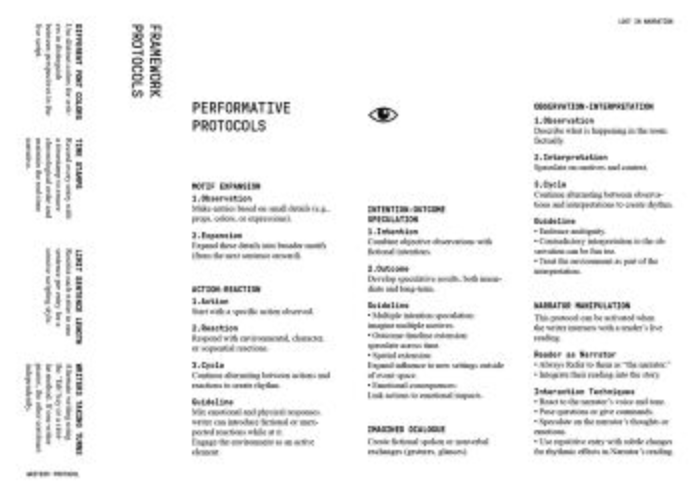
SI25 Post-mortem / Reflection
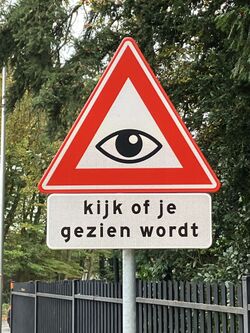
"see if you're being seen"--signage photographed in Ede
"...Perhaps, at its core, radio is more than a platform for performance - it's a celebration of liveness. Every broadcast we created reaffirmed that it's a space where unpredictability becomes a tool, errors and mistakes foster intimacy, and the connection between maker and listener becomes unique with each context presented."
↑ from the SI25 introductory text written together with Claudio
Of the event
On Performativity
this phrase I came across by chance became a central motif that helped shaping the Writers' Protocol as part of the performance:
"Kijk of je gezien wordt"
in connection to performativity, this phrase implies the liveness of the gaze, it asks:
- "who is watching me right now? Am I being watched -right now, in this moment?”
and this question mattered because each part of the performance relied on someone being percieved in real time, whether they are watching, reading aloud, or listening. And the performance operated in such loop:
- writers see → turns what they see into a live script → a spectator reads the script out loud → others(audience) also see and hear it(in a form of soundscape) → the whole process flows back into the space →
The scripts that were produced in this performance never stood alone, they needed a reader, listener, a voice, a body as a vehicle to carry them into existence:
- - they could only become an event when someone is reading
- - they could only become sound when read aloud
- - they could only take shape through someone's voice
in this sense, the audience could subtly shift from being just spectators to becoming performers - simply by becoming aware that they’re being seen, and by participating in the loop through voice, hovering around the writers, or just giving attention. Therefore the act of being seen becomes the condition of the script (and for the narrative) to exist at all.
and this process resonated deeply with how I first came to understand the concept of performativity.
Methods
SI26
Declaration
Others
Research Subject / Upcoming Projects
